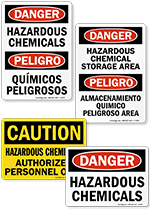Asbestos: A Brief History
 Asbestos is a fibrous mineral with incredibly useful properties that have been known since the Roman Empire. Charlemagne had an asbestos tablecloth; King Chosroes II of Persia had an asbestos napkin; and in the 19th and 20th centuries industrial-scale asbestos was used for everything from brake pads to lawn furniture to cement.
Asbestos is a fibrous mineral with incredibly useful properties that have been known since the Roman Empire. Charlemagne had an asbestos tablecloth; King Chosroes II of Persia had an asbestos napkin; and in the 19th and 20th centuries industrial-scale asbestos was used for everything from brake pads to lawn furniture to cement.
Asbestos has lots of advantages as a material: it’s cheap, strong, lightweight, fireproof, and an excellent insulator. There’s only one problem: asbestos fibers are horrifically toxic if inhaled.
The very same microscopic fibers that make asbestos so versatile also make it incredibly dangerous if those fibers get into the lungs. As early as 1924, British physicians made the direct connection between inhalation of asbestos fibers and respiratory failure, a disease called “asbestosis.” Lawmakers on both sides of the Atlantic passed laws to improve ventilation in dusty workplaces over the 1930s and 1940s in response.
But this didn’t end the story. Asbestos is also tied directly to mesothelioma, a particularly deadly form of lung cancer which only appears decades after exposure to asbestos. Over 90 percent of mesothelioma patients die within five years of diagnosis. Famous victims include actor Steve McQueen, who was exposed to asbestos both while serving in the US Marine Corps and during his motor racing career. (At the time, asbestos insulation was extremely common in ships, and auto racers would wear fireproof asbestos suits as protective gear.)
Worse yet, the companies involved in the asbestos industry knew about these hazards. And the industry concealed the dangers from the workers exposed to asbestos. This ultimately led to a flood of products liability and personal injury lawsuits which devastated the American asbestos industry, leading ultimately to the bankruptcy of Johns-Manville, then a Fortune 500 company and many other manufacturers. And in Italy, though the conviction was later overturned, billionaire Stephan Schmidheiny was convicted of voluntary manslaughter for his involvement in Italian asbestos workers’ deaths.
This litigation is still ongoing– as evidenced by the legions of asbestos lawyers still advertising on TV, the Internet, and the press. Asbestos is not a hazard, provided that its fibers don’t become airborne– but once asbestos fibers get airborne they become a dangerous carcinogen.
Category: Resources












